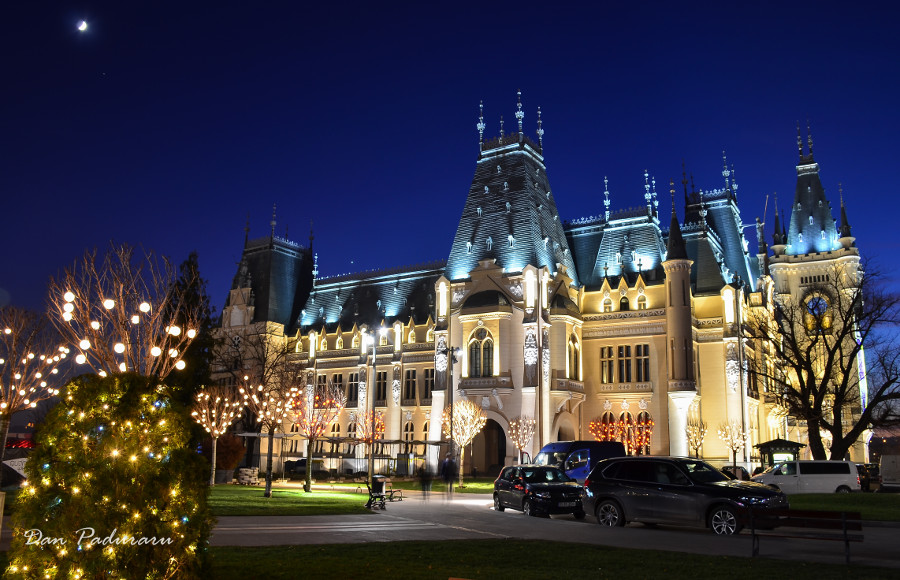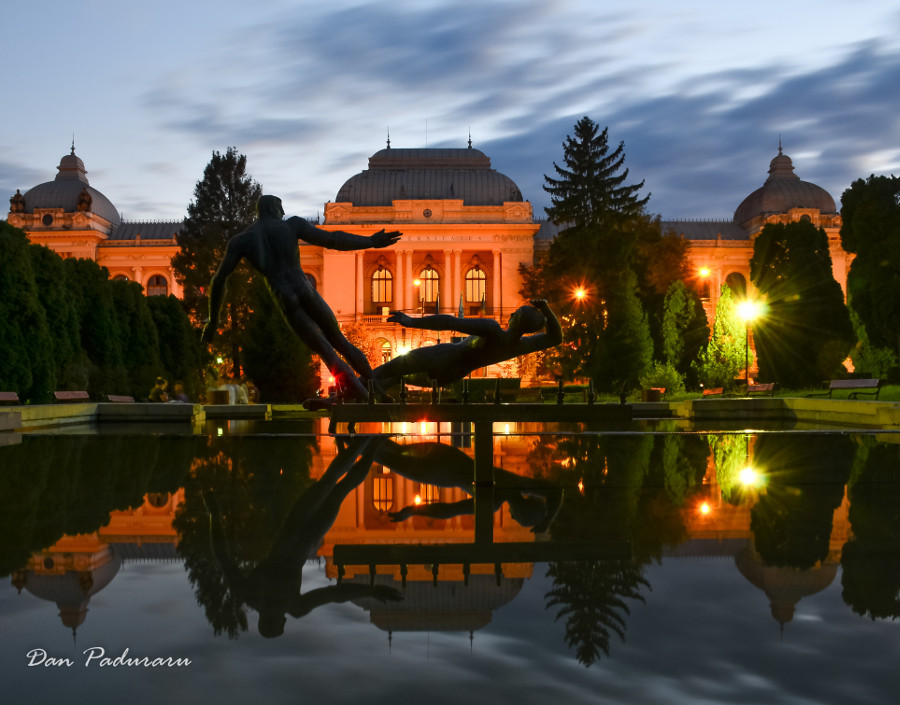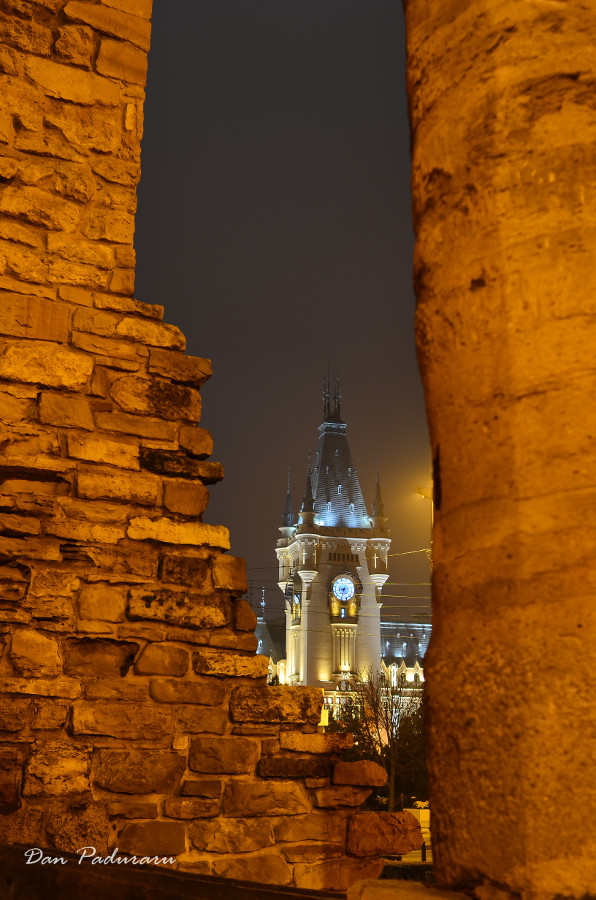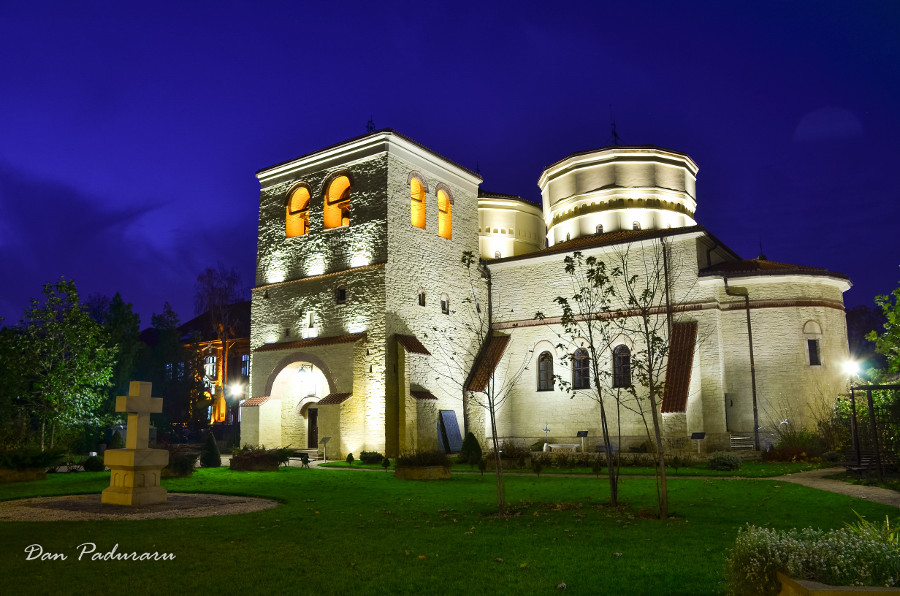Iași (also historically referred to as Jassy or Iassy) is one of the largest cities and a municipality in Romania. Located in the historical Moldavia region, Iași has traditionally been one of the leading centres of Romanian social, cultural, academic and artistic life. The city was the capital of the Principality of Moldavia from 1564 to 1859, then of the United Principalities from 1859 to 1862, and the capital of Romania from 1916 to 1918. Major events in the political and cultural history of Moldavia are connected with the name of the city of Iași. The great scholars of the 17th century Grigore Ureche, Miron Costin and later Ion Neculce, wrote most of their works in the city or not far from it and the famous scholar Dimitrie Cantemir known throughout all Europe also linked his name to the capital of Moldavia.

The first institute of higher learning that functioned on the territory of Romania was Academia Vasiliană (1640) founded by Prince Vasile Lupu as a “higher school for Latin and Slavonic languages”, followed by the Princely Academy in 1707. The first high education structure in Romanian language was established in the autumn of 1813, when engineer Gheorghe Asachi laid the foundations of a class of engineers, its activities taking place within the Greek Princely Academy. After 1813, other moments marked the development of higher education in Romanian language, regarding both humanities and the technical science. In 1835, Academia Mihăileană founded by Prince Mihail Sturdza is considered first Romanian superior institute in the country. In 1860, three faculties part of the Academia Mihăileană formed the nucleus for the newly-established University of Iași, the first Romanian university. The Physicians and Naturalists Society, founded in Iași, has existed since the early part of the 19th century, and a number of periodicals are published. One of the oldest medical universities in Romania, founded in 1879, is in Iași. It is now known as the Grigore T. Popa University of Medicine and Pharmacy. In 1937, the two applied science sections of the University of Iași became departments of the newly created Gheorghe Asachi Polytechnic School. In the period before and after World War II, the later (renamed Polytechnic Institute in 1948) extended its domain of activity, especially in the field of engineering, and became adopted a Technical University in 1993. The Central University Library of Iași, where the chief records of Romanian history are preserved, is the oldest and the second largest in Romania.

The first newspaper in Romanian language was published in 1829 in Iași and it is in Iași where, in 1867, appeared under literary society Junimea, the Convorbiri literare review in which Ion Creangă’s Childhood Memories and the best poems by Mihai Eminescu were published. The reviews Contemporanul and Viața Românească appeared in 1871, respectively in 1906 with great contributions to promoting Romanian national cultural values.

Many great personalities of Romanian culture are connected to Iași: the chronicler Nicolae Milescu, the historians and politics men Mihail Kogălniceanu or Simion Bărnuțiu, the poets Vasile Alecsandri or George Topârceanu, the writers Mihail Sadoveanu, Alecu Russo, or Ionel Teodoreanu, the literary critic Titu Maiorescu, the historian A.D. Xenopol, the philosophers Vasile Conta or Petre Andrei, the sociologist Dimitrie Gusti, the geographer Emil Racoviță, the painter Octav Băncilă, only to name a few.

With historical monuments, 500-year-old churches and monasteries, contemporary architecture, many of them listed on the National Register of Historic Monuments, Iași is an outstanding educational center. Pieces of architecture include the Trei Ierarhi Monastery, part of the tentative list of UNESCO World Heritage Site, or the neo-Gothic Palace of Culture, built on the old ruins of the mediaeval Princely Court of Moldavia. During World War II and the Communist regime many historical buildings in the old city center (around Union Square area) were destroyed or demolished, and replaced by International style buildings and also a new mainly Mid-Century modern style Civic Centre was built around the Old Market Square (The Central Hall). Other buildings include:
- Alexandru Ioan Cuza University main building (1897), a mixture of the Neoclassical and Baroque styles, houses the famous Hall of the Lost Footsteps where one can admire the works of the painter Sabin Bălașa;
- “Vasile Alecsandri” National Theatre, built between 1894 and 1896 in Neoclassic style with Baroque and Rococo inspired painted and sculpted ornaments;
- Metropolitan Cathedral, the largest Orthodox church in Romania, a late Renaissance style, with Baroque elements and Gheorghe Tattarescu paintings;
- Dosoftei House, a building from the second half of the 17th century in which in 1679, the metropolitan bishop Dosoftei settled the second typography in Moldavia. With three façades, arched and right-angled windows, the edifice was restored between 1966 and 1969. It houses the department of old literature of the Romanian Literature Museum;
- Golia Monastery, 1564, rebuilt in 1650 in late-Renaissance style with Byzantine frescoes and intricately carved doorways, is a monumental construction, a monastery in the middle of the city, surrounded by tall walls, with corner turrets, and a 30 m (98.43 ft) height bell tower;
- Roznovanu Palace (The City Hall), second half of the 18th century, rebuilt between 1830 and 1833, during World War I, it hosted the Romanian government;
- Union Museum, 1806, Empire style, the palace served as the royal residence of Prince Alexandru Ioan Cuza between 1859 and 1862 and in 1917–1918, during World War I, as the royal residence of king Ferdinand;
- Great Synagogue, in late Baroque style, built in 1657–1671, is the oldest surviving synagogue in Romania and one of the oldest in Europe;
- Pogor House, 1850, a meeting place for the city intellectuals, the headquarters of Literary Society Junimea (1863) and of the Convorbiri literare (Literary Interlocutions) magazine (1867), houses the Romanian Literature Museum;
- Armenian Church, built in 1395, testifies the existence of an important Armenian community in these parts of Romania;
- Luceafărul Theatre, 1987, a unique modern building in Romania;
- Old Catholic Cathedral, 1782, in Baroque style, and New Catholic Cathedral, 2005;
- Central University Library, 1934, incorporates Greek Revival elements;
- Great Railway Station, 1870, inspired by Venetian Doge’s Palace.

More details can be obtained from Wikipedia and La Iaşi.
Photos: Dan Păduraru.
